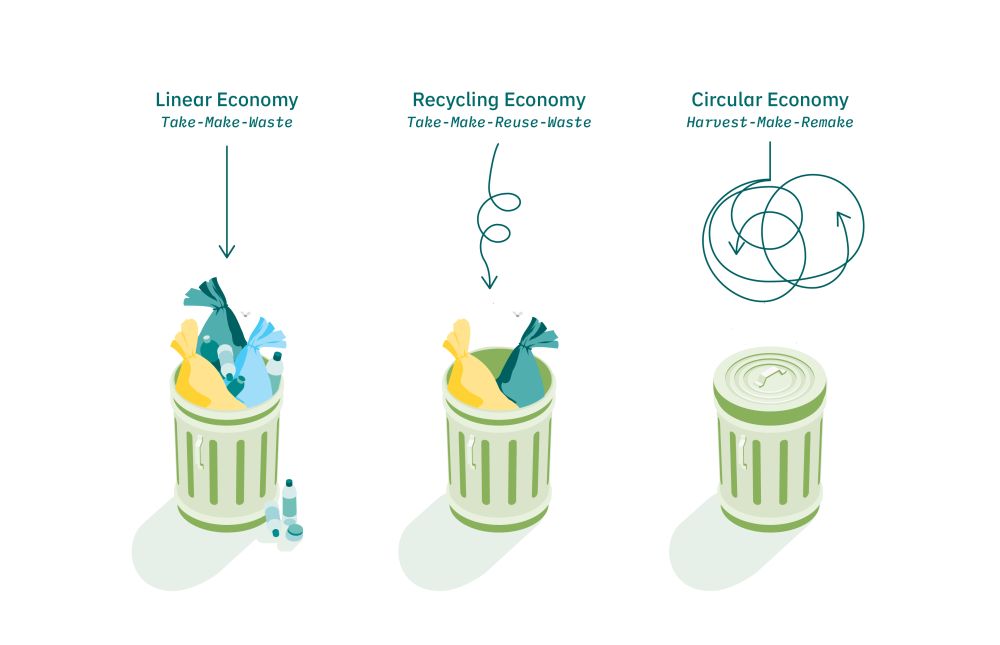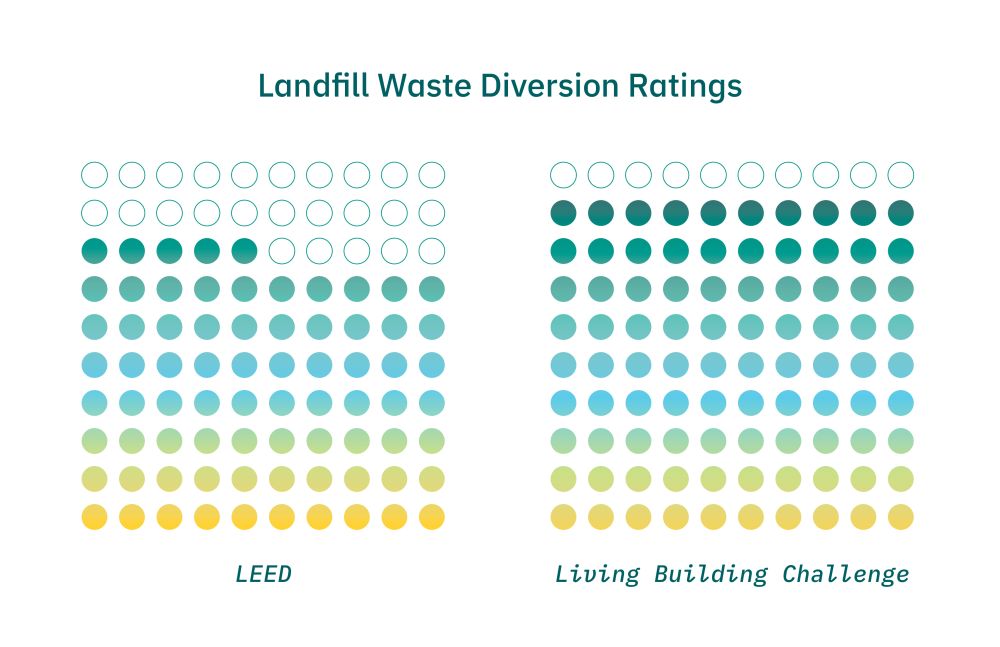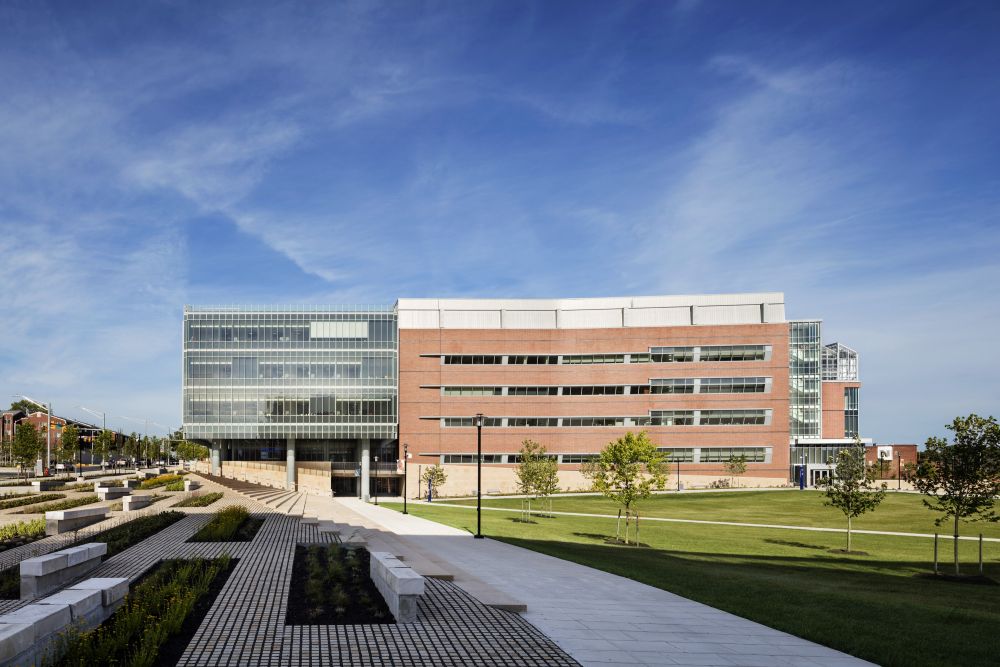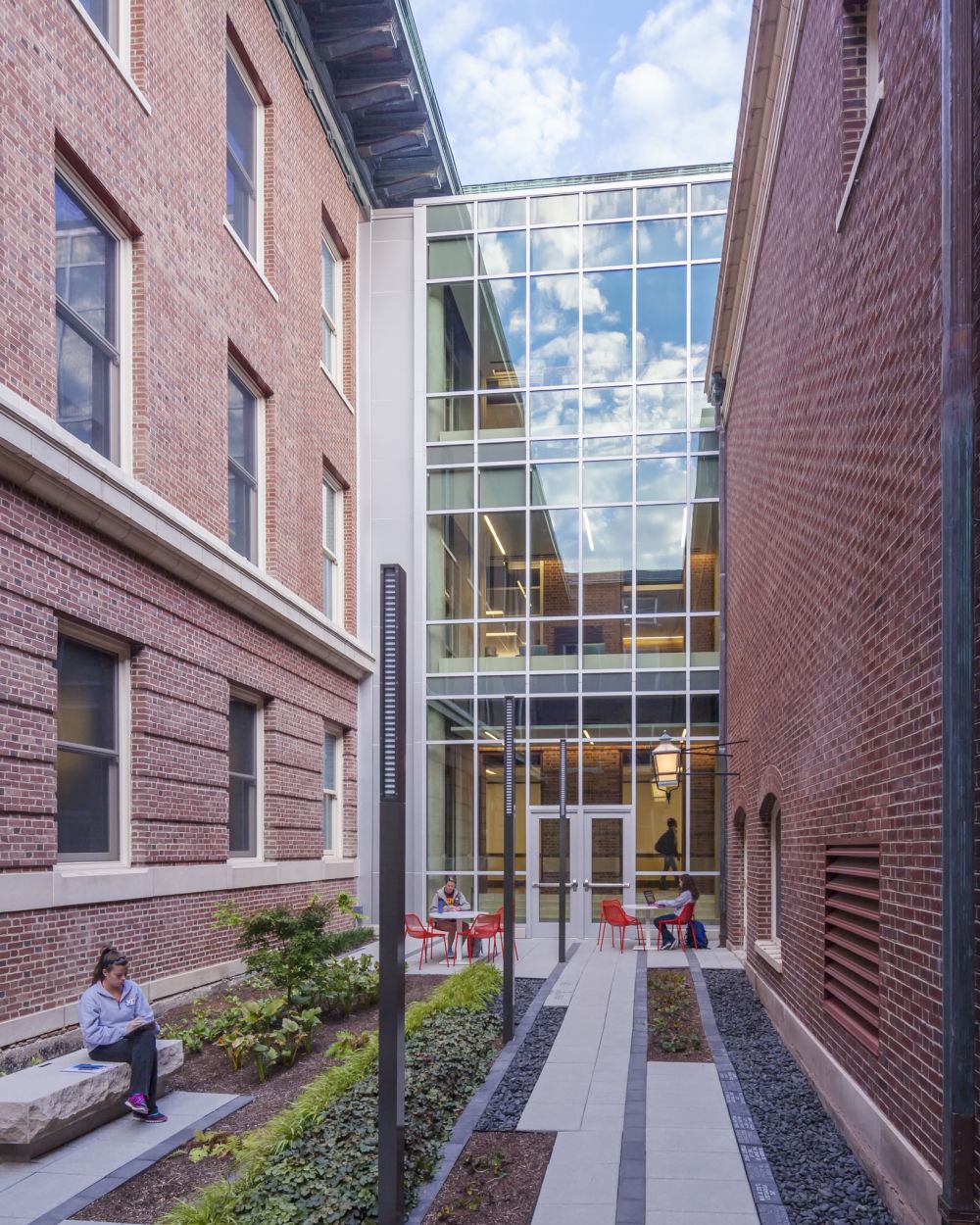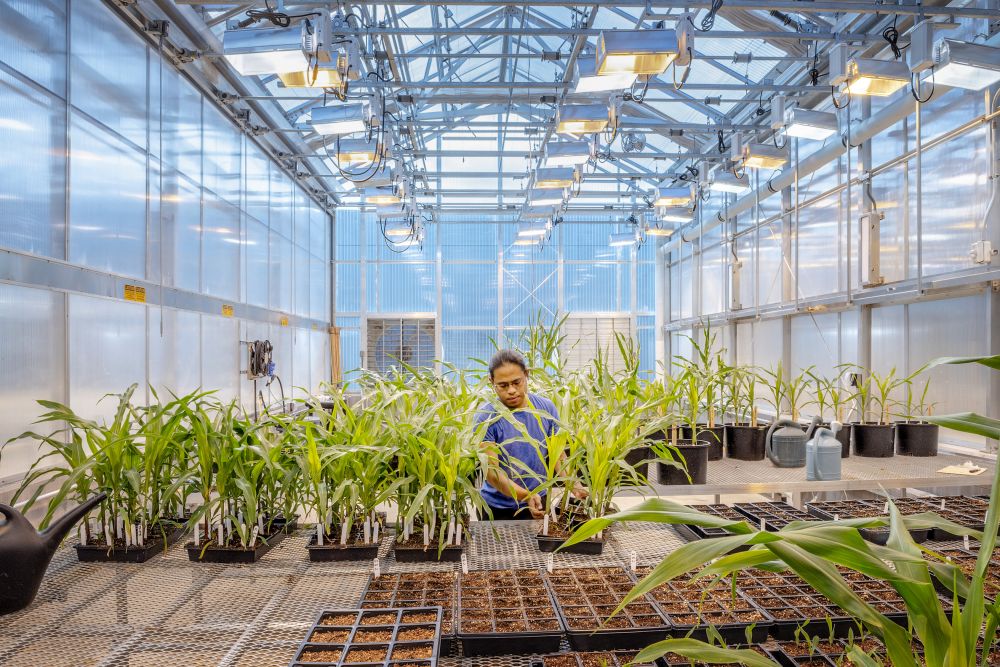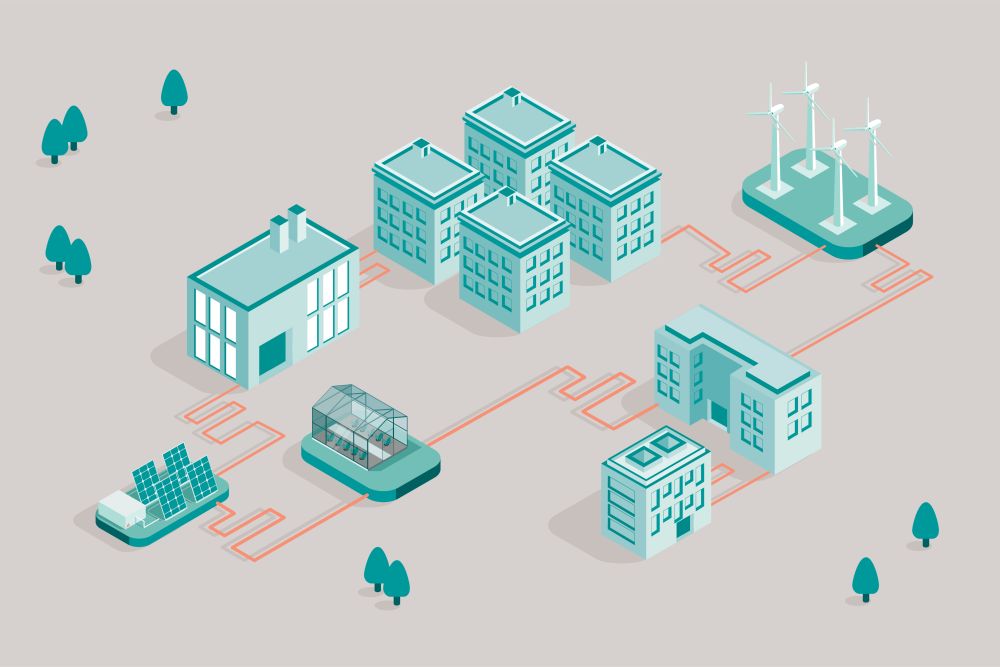Inspiring a circular future: Building towards zero waste facilities
By Heather Belsey and Yasha Ogg
February 14, 2024
Social Sharing
In the face of escalating urgency to stop harmful, unsustainable practices, the imperative to rethink our approach to "waste" is now a responsibility, not a choice.
The concept of zero waste facilities, grounded in the principles of the circular economy, is emerging as a transformative approach to redefine the way we construct and manage operations in buildings. Though achieving zero waste, especially in the current state of the building industry, may seem distant, we firmly believe it's an essential and worthwhile goal.
The current challenge: waste, waste, everywhere
The construction industry is a major contributor to global waste, generating a substantial percentage of the total municipal solid waste. According to the EPA, construction and demolition activities in the United States contribute between 230 million to 600 million tons of waste each year. Landfills receive a substantial portion of construction waste, contributing to environmental degradation. Moreover, the improper disposal of construction materials can lead to soil contamination and ecosystem disruption. But there’s opportunity amid all this “trash” as a significant portion of construction waste comprises materials that could be reused or repurposed. Therein lies the opportunity.
A complete rethinking of waste: a circular economy perspective
The circular economy challenges the traditional linear model of take-make-dispose and encourages a regenerative approach. The Ellen MacArthur Foundation defines the circular economy as a system where materials never become waste and nature is regenerated. In a circular economy, products and materials are kept in circulation through processes like maintenance, reuse, refurbishment, remanufacture, recycling and composting. Applying this paradigm shift to building design and construction entails an entire reevaluation of how we perceive and manage waste.
Planning for the end: considerations during construction
For those contemplating new construction, the journey towards a zero-waste facility begins at the end — with an objective look toward the building’s end-of-life phase. Throughout the construction process, a lot of waste is created by trimming materials into smaller pieces. This often results in a material length that is needed and a shorter, unusable piece often being discarded into the landfill. Through purposeful planning, designers can minimize the amount of unusable waste by utilizing standard material lengths, thus avoiding the need to cut pieces smaller.
At this current stage, sustainable rating systems such as LEED and the Living Building Challenge set ambitious targets for landfill waste diversion. LEED awards different point values to project teams by diverting either 50% or 75% of construction and demolition waste while the Living Building Challenge sets much higher diversion rates above 90%. To achieve these levels, project teams, contractors, clients and local waste organizations need to work together. Managing construction waste doesn’t only consider waste created while the building is under construction, but also the ability to reuse materials from existing buildings that are set to be demolished. Too many times new construction replaces existing buildings, and the demolition waste ends up in the landfill without a second thought.
Future-focused idea: Buildings as Material Banks
The concept of Buildings as Material Banks (BAMB) takes the circular economy a step further, envisioning buildings as repositories of reusable materials after their lifecycle ends. Utilizing technology such as RFID tracking, designers can identify and repurpose individual components, promoting a continuous cycle of reuse and reducing the demand for new raw materials.
Using the guidance included in BAMB, designers of new construction must begin to look at how they will reuse building materials from existing buildings to be demolished, both for the historical value inherent in some of the material and for the embodied carbon value in the materials.
Operationalizing zero waste: shifting behaviors and perspectives
The commitment to zero waste extends beyond construction into the operational phase. The WELL Building Standard and the TRUE Standard provide comprehensive frameworks that encompass physical infrastructure, organizational policies and facilities management.
Following these standards is an opportunity for all parties involved to buy into a zero-waste initiative. Implementing zero-waste practices in operations requires a significant shift in organizational behavior, from the leadership level to the employee level. As organizations consider the journey towards zero waste operations, WELL and TRUE certification becomes a tangible representation of a massive dedication to sustainable practices, offering a competitive edge in the market.
Future-focused idea: What about that “other” waste created in buildings?
Cutting-edge developments in wastewater treatment are revolutionizing how we manage and reuse water resources. Integrating biophilia into cutting-edge wastewater treatment on-site represents a holistic process that aligns with nature-inspired design principles. This approach goes beyond traditional engineering solutions, creating wastewater treatment environments that not only efficiently purify water but also provide a sustainable and visually harmonious space that resonates with natural ecosystems.
Designing buildings that grow, serve their purpose, and decompose aligns with a vision of a future where waste is minimized and resources are continuously cycled.
As technology advances, scalable solutions for biodegradable materials, biodigesters and on-site waste treatment facilities become integral components of a circular economy. These suggestions are merely scratching the surface of what a circular economy can look like in the future, but the time is now to start exploring and investing in these technologies.
The journey towards zero-waste facilities is not just a technical challenge, but a paradigm shift that demands a collective commitment. Let’s all be encouraged to consider the circular economy not only to reduce our environmental footprint but as a strategy that aligns with economic sustainability and resilience. Embracing the circular future through zero waste is not just a step towards sustainability — it's an investment in a future where buildings seamlessly integrate with the natural cycles of our planet.

